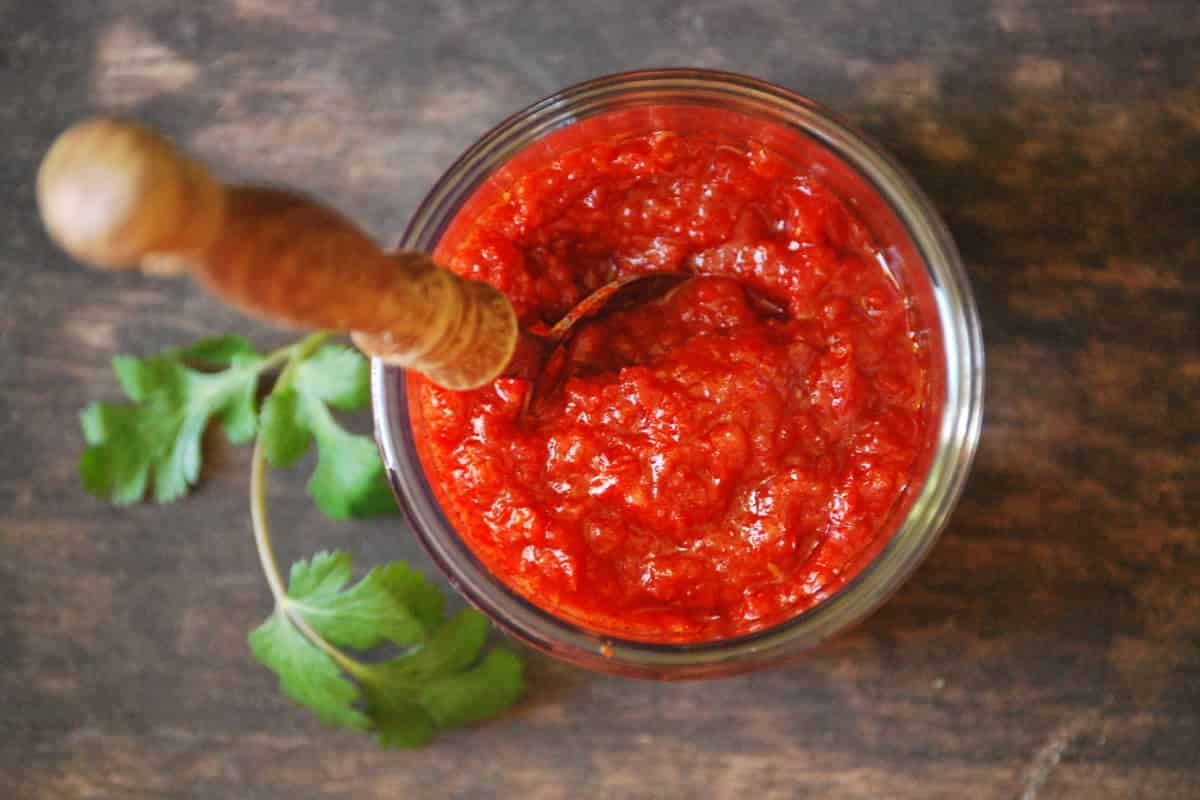Tomato paste and puree are made by cooking tomatoes for several hours to reduce the water content and then straining out the seeds and skins to form a thick; rich concentrate.
What is Tomato paste?
Tomato puree and paste are widely used as condiments for cooking a huge variety of foods and they are currently popular among many nations. Tomato puree and paste are created from cooked and blended tomatoes and are frequently used to flavor and texture soups, stews, and sauces. There are, however, certain distinctions between tomato puree and paste. Their consistency isn't the same. Tomato paste is thicker than tomato puree. Tomato paste is a thick paste that must be spooned or squeezed out of a container. Tomato puree is similar to a blended sauce in that it is thinner and more liquid. Tomato puree is formed from a mixture of tomato paste and water, while the paste is made from reduced puree. 
Types of Tomato Paste
One is more delectable than the other. Tomato paste is milder and sweeter than tomato puree, which has a more acidic flavor. They're cooked uniquely. Cooked and strained tomatoes are used to make tomato paste and puree. Tomato paste, on the other hand, is heated longer and reduced to a concentrate once the water has evaporated. Tomato puree is a smooth tomato mixture that is thicker than a sauce but not as thick as a paste. They're applied in numerous ways. 
Application of Tomato paste
Tomato paste is being exported to different countries using various types of packaging. Intermediate bulk systems (IBCs) have been employed on a small scale for many years. Plywood 1.200-kg bins have been widely used in the United States since the introduction of aseptic barrier bags. In Europe, the 220 l steel tapered drum is more or less the standard, whereas, in the United States, the plywood 1.200 kg box is the standard, though 200 l units are also extensively used. 
best price for tomato paste
Tomato paste packed in aseptic drums is considered to be regarded the top priority to export. These metal drums are the most optimal packaging for such products. The net weight of each drum will be 200-250 Kilograms. Moreover; this packaging prevents damage and extends the tomato paste shelf life to 24 months. It is also significant that transportation and storage will be easier to a great extent by using drums especially for exporting procedures. Plastic covers are now standard on most modern drums, representing a significant cost saving over old steel covers with a closing ring. This appears to be a basic device as well. 
interesting tips about buying tomato paste
We recommend Jar for those countries lacking proper infrastructure for tomato paste production. There are numerous designs and different sizes which could meet buyers’ expectations based on their requirements. This type of packaging is also good for countries that request customized labels on tin/cans; or jars. Those who are buying tomato paste in drums often have their processing lines and specific labels; but on the other hand, people are looking to buy smaller scales and the brand name is not of high value to their country. Some countries are willing to buy this product in sachet packaging. As you know; tomato paste must be stored in a refrigerator. Read more:
- salted tomato paste
- unsalted tomato paste
- tomato paste Harris
- Tomato paste ground
- Tomato paste gluten


0
0